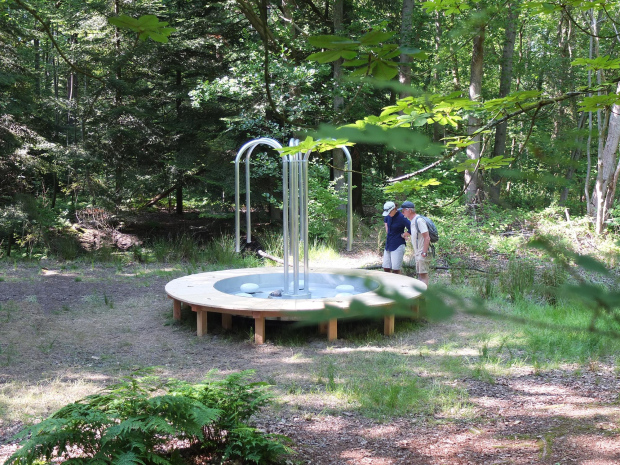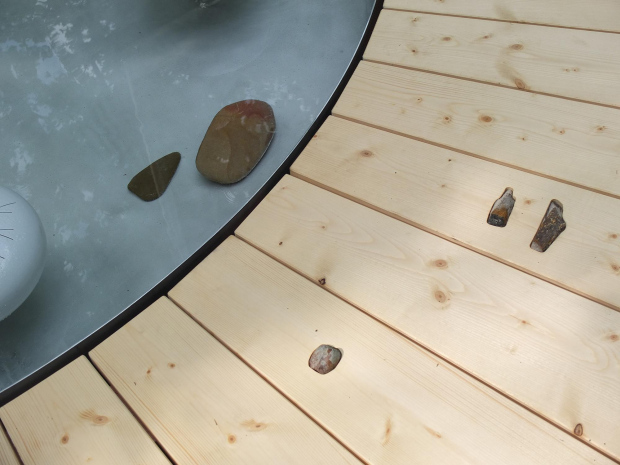The heart rates of animals can vary greatly from species to species. Humans typically have a heart rate between 60 and 100 beats per minute. Small animals, like mice and hamsters, can have heartbeats as fast as 400 to 600 beats per minute.
Elephants, on the other hand, have a much slower heart rate—around 30 beats per minute. In Fountain of Heartbeats, Sanne Vaassen brings together these diverse rhythms in a water installation. The work consists of a central reservoir from which water is pumped through a series of metal pipes. Each pipe represents a key animal species from the local ecosystem where the work is currently displayed—meaning the installation takes on a different form in each location.
From each pipe, water drips in the rhythm of the represented animal’s heartbeat. These drops fall onto resonating sound boxes, making the pulse of each animal audible. Together, the dripping pipes—beating hearts—create a subtle, ever-shifting melody. If one of the “hearts” disappears, the harmony is broken.
The fossils embedded in the wooden platform around the reservoir, along with the stones inside the water basin, form a tangible connection to the past. They remind us that the animals of today will one day become part of the geological timeline.
With this installation, Vaassen highlights both the fragility of each individual creature and the intricate balance of the ecosystems they belong to—where no voice can go missing.
This project is made possible by Thomas Hütten who made the wooden structure, Lucas Kramer who installed the sound system and sculptor Robvan Avesaath who made the metal structure.
This work was made possible by the Symbio Art Prize, awarded to Sanne Vaassen in 2024. With thanks to Arcadia.
Fountain of Heartbeats, 3 x 4m wood, aluminium, fossils, stones, 2025



